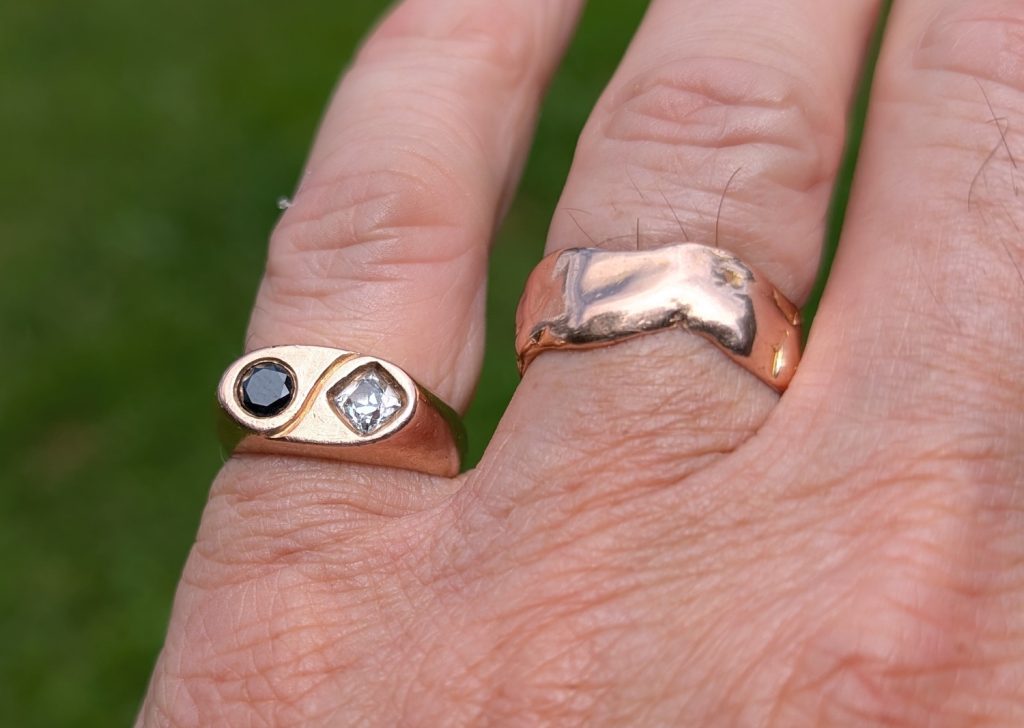“You must have come from the gypsies!” Mom exclaimed when I chose yet another red clothing item, maybe my rubber boots. When given a choice, even at two or three, I’d pick a bright color. Sometimes I asked Mom to give me a tour of her jewelry box. She would pull something out, hold it up and I’d grab it for a closer look. I liked the sparkliest ones best, like those many-colored and faceted crystals I learned later were called Aurora Borealis. Those fancy rhinestones flashed even in indoor light.
For one Mother’s Day, I added a dime store ring to her costume jewelry collection. An oval fake opal of exaggerated colors was surrounded by rhinestones, also of various colors. I was proud when she wore it. With all those sparkling colors, I really didn’t focus on her most valuable jewel, her diamond engagement ring.
Dad somehow got it to her during World War II. Perhaps he was home on leave before D-Day. Was there a jewelry store in their upstate Pennsylvania coal mining town? He was intrigued by what he told me was a Miner’s Cut diamond. This was an old-fashioned type of cut with a square shape and a taller profile than the modern, brilliant diamond cuts. Technically, it is called the Old Mine Cut, referring to Brazil or India, which is where diamonds came from before Africa dominated world production. Anyway, he was intrigued by its connection to his coal mining town. It could have been more affordable too, as it was an old-fashioned way to cut a diamond.
It was simply set, with platinum at the top, so that the stone would not get a yellow cast from the gold of the rest of the ring. Mom said, “Yes,” and they married in February 1946, three months after he returned from the war. When she died in 1992, Dad kept the ring, and at some point, he gave it to me with some of her other jewelry. I put it in my safe deposit box at the bank; I didn’t have a jewelry box. Occasionally, I’d look at it while fetching my passport. One day I brought it out into the sun and let the diamond sparkle in the light, sad for its long time in the dark of the bank vault.
An idea emerged, and I took it to the jeweler who made our wedding bands. I asked about black diamonds. I was visualizing a yin yang design with the square white diamond in one lobe and a round black diamond in the other. He was enthusiastic, and made me a ring of rose gold, like my wedding ring, chosen to go with my skin color, and also used on the rare gold-mounted violin bows I used to rehair.
Over the years I have smiled at the twinkle of that square-cut diamond on my pinky, imagining the young love that began in the 1940s and begat me in 1952.
